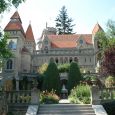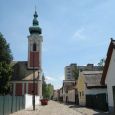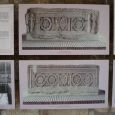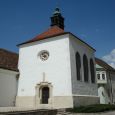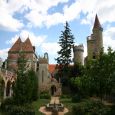Szekesfehervar
Advertisement
By train
There are very frequent rail services from Budapest. First, there is an hourly commuter train service to Szekesfehervar, stopping at almost every station (although, between Kelenfold and erd felso it only stops in Budateteny) and taking 80 minutes to arrive. Second, there is an hourly intercity rail service (labelled gyors and NOT InterCity) running to Szombathely and Nagykanizsa alternately, stopping only at Kelenfold on its way and taking 65 minutes to arrive.
All trains depart from the Budapest-Deli station and to not serve the Nyugati and Keleti stations.
By bus
Direct connections from Budapest depart from the Nepliget bus station. The journey takes roughly an hour and fifteen minutes. Prices are exactly the same for the bus and for the train. The only advantage then to taking a bus instead of the train would be that the city bus station is located exactly in the downtown.
By car
The M7 runs just south of Szekesfehervar and is the fastest way to arrive. From the exit merge onto 63 which will eventually take you into Piac sqaure.
By taxi
Since the city is 60km out of Budapest this is by far the most expensive option. If, however, you are arriving at Ferihegy and are going directly to Szekesfehervar, Zona Taxi offers a fixed rate of 20000 Hungarian forint.
Bory Castle
Bory Castle is the town's most popular attraction. Located in an Eastern residential area the castle (really more of a mansion) is the work of Hungarian sculptor and architect Jeno Bory. The castle was built from 1923 to 1959 by several of Bory's students under his supervision. Today the castle contains a wide range of architectural styles ranging from Scottish, Romanesque, and Gothic. Most of the complex is completely open to visitors, and you can freely climb the towers, or walk through the gardens and among the sculptures all originals by Bory. Inside are several galleries featuring paintings, also created by Bory
Archaeological Exhibition
In 1992 the new Museum of St. Stephen's Monastery was opened.In the permanent archaeological exhibitions on the first floor. At the same time we passed the provincial Roman Stone reports on the ground floor and the Ceremonial Court. The exhibition in 1993, won the European Association of Museums Award: European Museum of the Year Award - Special Commendation.
The Roman Stonework in Fejer county area of King St. Stephen Museum, was I-IV. century stone monuments shows that most of the tombstones, sarcophagi, altars, and some landmark statue of Emperor fragments.
Bishops Palace
Bishops Palace this large pile dominates Varoshaz square and is one of Hungary's most important Zopf style buildings. The palace was constructed in 1800-1801 from ruins of the former cathedral in the Ruin Garden.
Babahaz (Doll Museum)
Babahaz (Doll Museum) on Megyehaz u. 17 has 63 dollhouse displays spread out over seven rooms. The collection contains dolls and dollhouses as old as from the 17th century up to the 20th. The fine details are sure to keep adults just as interested as little girls, and for the boys there's even a large display of old military toys set up defending a castle. Photography is not allowed in the museum.
Kozepkori Romkert
Kozepkori Romkert (Medieval Ruin Garden) is a national memorial located on Koronazoter, just east of the main square. In the middle ages this was the site of Hungary's most important church and had it not been for the Turks blowing it up, it would be to Hungary what Westminster Abbey is to England. The church was begun in 1016 under Hungary's first Christian king, Szent Istvan. At the time, Szekesfehervar was the capital of the kingdom, and this church was the site of numerous coronations. In addition, from 1038 to 1543 fifteen Hungarian kings were put to eternal rest here (starting with Szent Istvan himself and ending with Szapolyai Janos). As already mentioned, the church was destroyed by the Turks in 1601 and in 1800 the remains were used to build the Bishops Palace on nearby Varoshaz square. Today all that remains of the once great basilica are stone walls outlining its form. The big draw, however, is to visit the mausoleum containing Szent Istvan's sarchaphogus. This was discovered in 1803 during the building of the Bishop's Palace. The cherubic forms on the outside and royal relics contained within clearly identified this as the tomb of Szent Istvan. The sarchaphogus originally was taken to the National Museum in Budapest, but was brought back to Szekesfehervar in 1936, and since then has remained in the attractive mausoleum at the entrance of the garden.
Szent Anna Cathedral
Szent Anna Cathedral directly next to the Szent Istvan Cathedral on Arany Janos utca, Szent Anna's is one of the few medeival buildings left untouched by the Turks. The church was constructed in 1470 in a Gothic style.
April - July


